Subscribe by Email
-
Recent Posts
Category Archives: Books
The Martian
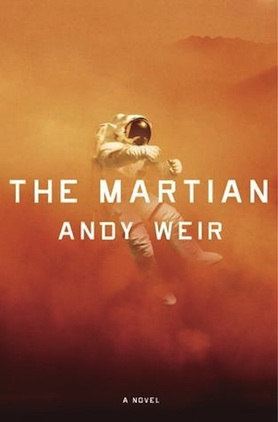
Is this book cover cool or what? Kudos to Eric White, its creator. I was lured to this sci-fi novel because of all the good words going on about it on blogs and book sites. It’s been quite the success story. First the author Andy Weir self-published “The Martian” on his website for free in 2012, then he put it on Kindle for 99 cents, and later it was picked up by Crown publisher for six figures and put out again in February of this year. The movie rights for it have already been optioned, and Matt Damon is being rumored for the main role. Wow! Not bad for a first-time author.
Truth be told, I’m not normally a science fiction or space reader, but the synopsis caught my eye. It’s about an astronaut (Mark Watney) whose crew is on a mission on Mars when a violent dust storm hits. Watney’s suit is pierced and he’s flung unconscious out of the crew’s reach. Thinking he’s dead, the others lift off, ending their mission and stranding Watney behind with no way to signal Earth that he’s alive.
Holy smokes, it’s a bleak situation, but Watney’s no quitter. He puts his mind to work on how to survive and reconnect with NASA. And here I thought Robert Redford’s character in the recent movie “All Is Lost” was resourceful, but in that regard Watney leaves him in the dust (so to speak). Watney’s quite the engineer-astronaut-botanist phenomenon. He’s a math-physics nerd but a smart-ass too. He’s got gumption, which apparently doesn’t hurt if you’re left on a totally inhospitable red planet.
“The Martian” drew me in at the start. I absorbed the dire situation as if it were the missing Malaysian airliner whose puzzle needed to be solved. Where in the heck is it? And what would happen to Watney? Being a reader of epic Arctic and Everest survival tales, I pored over this one like a bat out of hell.
Some of the novel takes place on Earth within NASA as they grope with what to do, the other half takes place on Mars as the resourceful Watney tries to overcome his circumstances. It makes for an interesting back and forth.
“The Martian” though is loaded with technical details, which in my opinion gets excessive at times. It’s almost as if the author were adding all the equations and physics suppositions to show how smart he is. On the one hand, it’s great having a lot of scientific details in the novel to make it seem real, but the constant equation set-ups clogged it up at times. In places, it sort of felt like reading a textbook instead of an action thriller. My mind fuzzed over some of the scientific and math thought processes, and the middle of the book sagged for me, as Watney carried out a lot of tests for his proposed rescue plans. No wonder I gave this book to my husband to read first; he’s an engineer he probably liked all these endless details.
But luckily “The Martian” picks up towards the end. And how it all plays out is worth sticking around for. I imagine the movie of it could be quite riveting. Despite the excessive details, I’m still amazed about the author’s knowledge of space and that he made “The Martian” into such a believable tale. It might not be for everybody, but if you’re a nerdy fan of the final frontier and such, you’ll inevitably like this one, too. Continue reading
Posted in Books
15 Comments
Divergent and Rosie
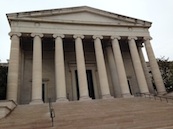
I’ve been AWOL for about two weeks from blogging. I went “Divergent” so to speak. I traveled to the Washington, D.C. and the Northern Virginia area for my adult “spring break,” visiting old friends from when I once lived there and seeing some sights. It was a really fun trip. To the left is a photo of the National Gallery of Art, where I saw an interesting exhibit, a portrait of American life, from the photos Garry Winogrand took from the 1950s to his death in 1984. Check out the exhibit if you get a chance.

Then after getting back home our dog Stella became ill and had to go to the emergency vet hospital, which turned our world upside down. After 3 1/2 days of care there, it appears luckily she’s going to be okay to our great relief. She had tested positive for exposure to an antifreeze-type of toxin, which we don’t know exactly where she was exposed to, but we are taking all precautions and have taken our car to get checked for any leaks. We are so fortunate to have her back from what was a life-threatening situation. I think my anxiety went through the roof, but we were very lucky and now she’s back home being her regular Lab self. Oh thank goodness!
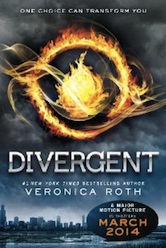
I did read “Divergent” while flying back and forth from D.C. Surely, Veronica Roth’s 2011 dystopian young-adult novel made for a good airplane/spring-break-kind-of read, even though I’m typically not a frequent YA reader. It’s got action, suspense, a little love story and an easy reading level. (Maybe too easy?) Am I the last one to have read this bestseller? Probably. I plan to see the movie of it soon, but I haven’t seen it just yet. The movie took in $56 million on its opening weekend, which isn’t too shabby but is nowhere near “The Hunger Games” box-office haul.
If I were to compare the “Divergent” book to “The Hunger Games,” I’d have to say that I found Suzanne Collins’s book better written, but I still enjoyed “Divergent” and found it somewhat similar; they both have 16-year-old protagonists who must undergo enormous physical challenges in a post-apocalyptic world. “Divergent’s” premise though seemed rather hokey to me that people were divided into factions based on their predispositions to Candor, Erudite, Dauntless, Abnegation and Amity. On their way to building a utopia it seems the survivors must have forgotten their heads, believing that by separating people by character would solve society’s problems. (Good luck with that.) But what the heck, I was going to go with it.
The book gets good though when Tris goes off to undergo the initiation process for the Dauntless (brave) faction. The dueling cliques that form between the initiates and the training scenes are some of the best, as Tris jumps in and out of trains, hurls down a wire from the top of the old Sears Tower, and goes through exposure therapy and simulations to try to eradicate fears. The training reminded me a bit of the book “Ender’s Game.” Though along the way Tris falls for her trainer, which isn’t in that one.
And of course, she has a secret and isn’t solely Dauntless. The ending is an action page-turner as the Erudite faction tries to violently take control and Tris is one of the few who can stop them. I look forward to seeing how the movie handles the book. One movie critic I read said the movie is “more satisfying than the bestseller that inspired it.” Could it be true? Have you seen it and what did you think?
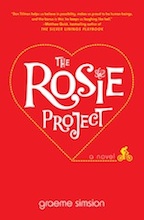
On top of “Divergent,” I just finished “The Rosie Project,” which is a romantic comedy that I read for my book club. We are going to discuss it on Tuesday, so I will gather my thoughts about it and write more later. I did mostly enjoy “The Rosie Project” and thought it was clever. It’s about a socially-challenged man’s search for the perfect wife. By the time Rosie comes along she’s so wrong according to his criteria but so right for him regardless. The story’s both funny and charming.
What did you think? Have you read this one? Continue reading
Posted in Books
10 Comments
This Is the Story of a Happy Marriage

Well the polar vortex ended last Friday and a glimpse of spring has arrived today in western Canada with 55 degree weather. That translates into Miami temps for this time of year here. We’re loving it for sure!
I’ve been meandering a bit with my reading, but just finished Ann Patchett’s nonfiction book of essays called “This Is the Story of a Happy Marriage,” which came out last November. My sister gave it to me for Christmas. I love the title; it makes you want to know if she’s being real, or if she has some secret cornucopia of knowledge about marriage. I was sure I would devour the collection in no time at all, but I’ve been enjoying it this past week more slowly like a glass of fine wine. I find there seems to be more to absorb in nonfiction and it takes me a bit longer than a novel to get through, generally speaking.
But I liked reading it slowly as it’s a great book and I would highly recommend it, especially to people who are interested in writing, or in the aspects of a writer’s life. It’s quite personal and the combined 22 essays flow together almost as if you were reading a memoir. There’s chapters on just about every facet of Patchett’s life including her childhood and family, how she became a successful writer and co-bookstore owner, her divorce and eventual second marriage, and her life in Nashville. It’s all there: her loves, losses and how writing has always been her mission in life, which she’s worked very hard at doing both as a journalist and as a novelist.
The way she writes these essays it’s almost as if you know her and she’s telling you like she would a friend, candidly and confiding. She’s often funny and self-effacing. The essays are a genuine treat to read, her descriptions and observations reveal truths about life in various episodes. I was lured into them eagerly like a bee to a bonnet. It made me wonder if Patchett’s actually a better nonfiction writer than she is a novelist. This collection made me think so. Granted, I have read just two of her novels so far, one of which “State of Wonder” I liked quite a bit; the other “Run” I didn’t care for that much. But I’d like to read her novel “Bel Canto,” which I’ve heard is her very best.
Meanwhile this nonfiction collection knocked it out of the park for me. I especially appreciated her essay “The Getaway Car,” which gives useful advice if you’re interested in writing, and a candid perspective on being a writer. I also found interesting her foray into becoming a bookstore co-owner, which she writes about in “The Bookstore Strikes Back.” And the title essay “This Is the Story of a Happy Marriage” about the long road to love she found with her second husband is a poignant piece that might remind one that sometimes you don’t realize the really good thing or person you’ve got till they’re (almost) gone.
I enjoyed about all of the essays in this book. She even writes about her very dear dog Rose in “This Dog’s Life” and “Dog Without End,” which made me happy being such a dog lover. I guess only one essay “The Mercies” about the former Catholic nuns who taught her school and befriended her I found a bit convoluted and didn’t draw me in as much as the others. But on the whole, I was quite taken with this volume and will keep it to reread pieces again in the future.
What about you — have you read this book or others by her? Or do you plan to? Continue reading
Posted in Books
11 Comments
Oryx and Crake

Wow is Margaret Atwood’s “Oryx and Crake” from 2003 a wild, dark read. I had been bemoaning the choice of it which a member of my book club selected for us to read this month. I had put it off and put it off till the last possible minute, not wanting to read another dystopian futuristic novel full of gobbledygook and destruction. And the first 200 pages I stayed bemoaning it, but then I latched on to the story and the last 150+ pages flew by quickly. Now I’m looking to read her two others sometime in this trilogy: “The Year of the Flood” (2009) and MaddAddam (2013). So much for bemoaning it; I ended up enjoying its strange imagery and story.
I guess that’s what’s great about a book club; you read selections you might not otherwise read and it broadens your reading scope. I’m glad now to have read “Oryx and Crake” although it’s not necessarily an easy read. It challenges you in ways. It’s often harsh-mouthed and graphic, critical and over-the-top, but that’s Margaret Atwood for you — strong in her convictions, especially concerning science, the environment, and politics.
But how can I explain “Oryx and Crake,” which Atwood disputes as science fiction and calls speculative fiction because she says it doesn’t deal with “things that have not been invented yet.” Set sometime in the future, it’s about a survivor named Snowman (originally named Jimmy) who’s seemingly the last human on Earth after a virulent pandemic strikes the world. He’s left to dodge unfriendly predators and weather conditions and take care of some bioengineered humans his friend Crake once pioneered. He has painful memories of what transpired on Earth and how everyone died.
The narrative shifts back and forth from his present bleak state as a survivor to decades earlier when Earth was populated and Jimmy met his very intelligent friend Crake in grade school in the secured compound where their families lived. The story follows their lives thereafter in college and then getting jobs in corporations and their love for the same girl named Oryx, who they first saw on a porn website. I didn’t say this story would be normal, did I?
It’s a world in which biotech firms like Crake’s are creating super pills and experimenting with genetically engineered humans, and where global warming and overpopulation have taken a severe toll, especially on the pleeblands outside the secured compounds. The narrative leads up to what happened on Earth and the roles Jimmy, Oryx and Crake play. It’s suspenseful in a “Walking Dead” kind of way as the doomsday unfolds.
Although at first I feared the novel would be too dense or strange, I got into after awhile with Snowman (Jimmy) as the narrator. It turned out not to be too hard to understand or wacko. Its underlying message of the destructive direction our society is headed gets a bit heavy at times but not so far-fetched as not to be believed. Who’s not to say humans will hasten their own demise.
Apparently Atwood was in the midst of writing “Oryx and Crake” around the time of the Sept. 11, 2001 attacks, which made her stop for a few weeks. No wonder: its negative scope. By the end though I was entangled in its web and left wanting to find out more in book two. I’m sure “Oryx and Crake” will make for an interesting discussion for my book club this Tuesday evening.
How about you — have you read this novel or any of this trilogy? And what did you think? Continue reading
Posted in Books
24 Comments
The Fault in Our Stars

Yes, I finally got on the ball and read John Green’s 2012 young adult blockbuster “The Fault in Our Stars.” I’m probably one of the last in blogger-land to have done so, and it came at a good time when I needed a quick, easy read after some of the denseness of the last novel I read and another dense one for my book club to follow.
And yes, I’m in the majority when I say I really liked “The Fault in Our Stars” and it’s a wonderful, stunning read. Even though it’s sad about two high school kids who have cancer who meet at a support group and fall in love, it’s also very beautiful and moving without being overly sentimental. Author John Green captures the teenagers and their dialogue seemingly to perfection. And the characters, Hazel and Augustus, express plenty of sardonic wit and intelligence to keep the story from falling into a depressing or cheesy hole. Green brings these characters to life and I really felt they were real people by the end who I knew and would miss.
“The Fault in Our Stars” is a book about living and dying and questioning whether one has meaning. It makes you feel what it’s like to be in a cancer kids’ shoes but it also gives them dignity and humanness too. I also liked the book’s side plot of Hazel’s quest to try to contact the author of her favorite book to find out what happened to its characters after an ambiguous ending. The quest takes Hazel and Augustus on a whirlwind adventure to Amsterdam where their connection blossoms.
I rarely read young adult novels but this one was really worth it, even though a tissue or two was required. It’s hard to really say too much about the story, other than to just rush out get the book and read it, which you must if you haven’t already. It’s made me want to read all of John Green’s other novels, too. I’m a convert now to his talent.
And I’m already thinking of the movie adaptation of “The Fault in Our Stars,” which comes out June 6. I’ve seen the trailer and I’m a bit worried it won’t be able to capture the right tone without being cheesy or fake-ish like the book does. Uh-oh. Will it live up to the book? Will the actors meet the expectations for the characters? The odds are against it, but I’ll likely see it anyways. It’s quite amazing that Shailene Woodley will play the lead roles for both upcoming movies “Divergent” and “Fault in Our Stars.” Wow she’s on a roll. I thought she was quite good in the 2011 movie “The Descendants,” so we will see if she can rise to these roles as well.
What about you — what did you think of this novel and do you plan to see the movie? Continue reading
Posted in Books
26 Comments
On Such a Full Sea

I was game for another dystopian futuristic novel and I hadn’t read the acclaimed author Chang-Rae Lee before so I eagerly picked up “On Such a Full Sea,” whose title is taken from a line in Shakespeare’s “Julius Caesar.”
It takes place in a wasted American landscape where three segments of society exist: the wealthy elite that live in walled-off Charter villages; the service workers in labor settlements that support the Charters; and the less fortunate who vie for survival in the open counties where it’s dangerous and difficult to get by.
The story follows a 16-year-old girl named Fan who lives in the labor settlement B-Mor that was formerly Baltimore. She’s a well-skilled tank diver who takes care of the fish supply sold to the Charters. But one day her boyfriend, Reg, who has an immunity to C-illnesses that the population doesn’t, goes missing. Soon after, Fan leaves B-Mor on a dangerous journey into the open counties to find Reg. Along the way she meets various odd characters such as Quig, a vet-turned-doctor living in a compound who barters away his patients; a murderous acrobatic family; and Miss Cathy, a wealthy woman who holds a troupe of young artistic girls in a room at her house.
But will Fan persevere and find Reg? And what happened to him? The novel reads like a tale about two folk heroes who become symbols to the troubled workers of B-Mor, which is undergoing a decline and crackdown.
You won’t find out about Fan’s and Reg’s fates till the end, but I almost wasn’t sure I was going to make it there, even though the novel is a normal 352 pages. “On Such a Full Sea” took me quite awhile to read. It’s challenging and dense on the whole and many pages don’t have any paragraph breaks.
The book’s narration by a B-Mor resident, who tells the tale of Fan, drove me crazy. At times he’s actively telling her tale, which is interesting to follow, but at other times he’s musing philosophically about this and that, which hindered the story and was generally boring to stick with. I kept wishing that Fan had narrated her own story so that it would come more to life. As it is, she is quite distanced as this folk hero, and you don’t really get to know her well.
Although the author conjures some vivid passages and images of a futuristic world in trouble, I came away from the novel feeling that it was a bit of a slog to read. The narration muted its suspense and I kept wanting it to deliver more. I had set my sights high for this novel but on the whole I was rather disappointed.
How about you — have you read this one? Or do you plan to? Continue reading
Posted in Books
6 Comments
Labor Day
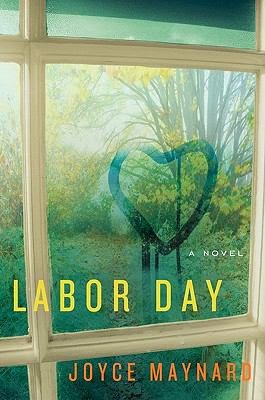
I read Joyce Maynard’s novel “Labor Day” this week, so I could be ready for the movie adaptation of it, which comes out on Friday. Apparently the author loves the movie made by director Jason Reitman, who also did “Up in the Air” and “Juno,” so that’s a good sign. It also stars Josh Brolin and Kate Winslet, who earned a Golden Globe nomination for her role in the movie even though it wasn’t out then.
My husband actually got the novel in 2009 when we met Joyce Maynard at our city’s annual book festival called WordFest. Joyce did a reading from the book then, which we heard. We talked to her after and she inscribed it for us: “To Robert & Susan with undying faith in the power of love, Joyce Maynard.” Her inscription likely refers to the theme in the book, or perhaps it was because I had recently moved to Canada to be with Robert, which we might have talked about. I guess I like to think it was a bit of both, even if that’s sort of wishful thinking.
In any case, it was nice meeting Joyce Maynard. I did not bug her by asking her about J.D. Salinger, which I know now she hates getting asked about — her brief relationship when she was 18 with the reclusive author of “The Catcher in the Rye” who was 53 at the time. He had crushed her early young life then, and also was known to have taken up with a dozen other young teens, she says. Yikes, the more you know about Salinger the less you want to. But at the time that’s what I knew mostly about Joyce — that she had this thing with Salinger. Which is really too bad because she’s a talented writer in her own right and shouldn’t always be associated with this painful experience she had so many decades ago.
Anyways “Labor Day” is my first novel of hers that I’ve read. It’s about a divorced, depressed single mom and her lonely 13-year-old son living in a small New Hampshire town. At the start of Labor Day weekend they come to give a lift to an injured, escaped convict who talks his way into staying at their house. Over the next few days, they get to know the man, learning his story and finding out he’s not at all like the murderer he’s portrayed as. Among other things, the man shares with them the secrets of how to bake a good fruit pie, repairs their house, and teaches the boy how to field and hit a baseball.
But the adolescent son who’s going through puberty comes to believe his mom and the man, who are falling for each other, are going to run away together without him, leaving him with his father’s new family. This ends up starting the ball rolling towards a conclusion that will affect all of their lives.
“Labor Day” is a fast, dramatic read, told from the boy’s point of view. It was easy to slip into the characters and to imagine their circumstances and the small town they lived in. Just when I got to know and like them, their situation gave me an awful pit in my stomach that things would come crashing down soon and I didn’t like where that was heading. Fortunately it didn’t end all doom and gloom. It’s a moving story with an “undying faith in the power of love,” among characters that don’t have a whole lot left to lose. Just read it and you’ll see.
How about you — have you read this novel and what did you think? And do you plan on seeing the movie? Continue reading
Posted in Books
18 Comments
The Curve of Time

“The Curve of Time” is a nonfiction Canadian classic that my husband gave me as a gift quite a while ago. In fact, he gave me two copies, the paperback edition and the first Canadian hardback edition published in 1968. I knew that since I live here in western Canada, I had to read this West Coast gem. It’s such a treasured touchstone, and one of Canada’s most enduring bestsellers.
“The Curve of Time” was written by an independent woman, a widow, Muriel Wylie Blanchet, who lived an adventurous life. Every summer for 15 summers starting in 1927, she piled her five home-schooled kids into their 25-foot power boat The Caprice and cruised with them along the coastal waters of British Columbia. “The Curve of Time” is her account of the summers they spent living on the water and ashore in very remote places for that time.
It’s a book that draws on your imagination, letting you experience their adventures on the small boat motoring along in a world rich with islands, inlets, sounds, forests and mountains. You can only imagine the natural beauty they saw, the lushness of the landscape, and the elements such as the tides, fog, rocks, and storms they contended with. Capi, as she was called by her kids, traces the voyages of Captain George Vancouver to the area in 1791-95 and also the discovery claims of mariner Juan de Fuca’s.
She’s incredibly brave as a mother alone out there on the remote West Coast with five kids. Along the way, they befriend loggers, explore Native villages, and have run-ins with bears, cougars, and killer whales. At times, Capi has to fix the boat’s engine and battery, which strands them in precarious situations. The weather often turns bad and I sometimes feared whether they had enough to eat.

Capi is great though with her kids and is able to teach them so much about the natural world and life situations; it’s better than being at any camp. She’s a born naturalist who is able to describe her surroundings — the fish, the trees, and the water – everything in such wonderful detail. It makes it easy to imagine what they experienced. The kids reminded me ever so slightly of the Box-Car Children (if you recall those books). They come off as curious, industrious, eager to be a part of the boating adventures, and helpful as crew members. They’re not consumed by today’s iPhones, Xboxes, and computers. You got to admire their childhood long ago in the Pacific Northwest.
“The Curve of Time” is broken up into the various episodes the family has and jumps around in time over the summers they spent. There’s no real chronological order to it. You can pick it up at any point and read an episode and not miss a lot of background. It’s difficult to track exactly the boat’s course and all the inlets and places she describes. You’ll confound yourself if you try to read it for places you need to pinpoint. It’s best just to lose yourself in the whole experience of their seafaring. After all, it’s a place she describes as if time did not exist.
I enjoyed “The Curve of Time” a lot, even if at times I got lost about exactly what or where she was talking about. I was drawn to Capi and her kids from the very start. She narrated with an admirable sensibility and made journeying with their troupe interesting and fun, if not, at times alarming, such as the time one son took a bad fall and she had to get him to a doctor quickly although they were in the middle of nowhere. She prevailed though, and I was sorry to see her go by the book’s end.

Capi Blanchet is a real-life heroine I’ll have to add it to my most-admired list. Unfortunately she passed away the year her book was first published in 1961 and she did not get to see the success of “The Curve of Time.” It is great though that the book’s popularity has endured, and that it has become an iconic Canadian classic.
It should be required reading for anyone remotely interested in boating on Canada’s west coast, or as a glimpse into how things once were and how maybe they still are for a lucky yet adventurous few. I envy them.
How about you have you read or heard of this book? And what did you think? Continue reading
Posted in Books
4 Comments
Defending Jacob
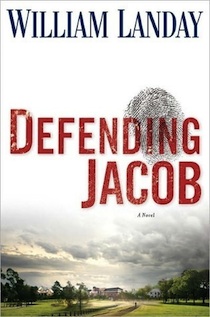
I had had William Landay’s legal thriller “Defending Jacob” on my to-be-read list for quite awhile, ever since high praise about it came out after it was published in 2012. So I recommended it to my book club to discuss this month for a fast winter read, and it didn’t disappoint. I’m actually surprised that the suspense-filled “Defending Jacob” hasn’t been made into a movie by now (though it’s still in development I think). The twisted novel “Gone Girl” will beat it to the box office in 2014.
“Defending Jacob” has all the elements of a riveting “Presumed Innocent” courtroom crime drama. It reminded me a bit of the 1987 Scott Turow classic mixed perhaps slightly with Lionel Shriver’s 2003 novel “We Need to Talk About Kevin” — it’s just a bit different and maybe not as intense. But if you liked those, there’s a good chance, you should jump to get this one as well.
Landay’s novel is about a district attorney and his wife whose 14-year-old son, Jacob, is accused of killing a classmate. The evidence against Jacob doesn’t look good, though his parents believe in him and will do what it takes to prove his innocence. As his murder trial approaches and things seem desperate, the defense must guard against potential accusations in court that Jacob inherited a genetic disposition to commit murder based on his father’s violent family. On top of that, it must poke holes through all of the prosecution’s evidence.
“Defending Jacob” keeps you guessing till the end whether Jacob is guilty or not. Narrated by the father, the story portrays a family of three at the edge of its breaking point. It raises questions about what the responsibilities of parents’ with troubled teens have to each other, to their kid and to the public at large. I found the novel to be very compelling on this level.
My only qualm with the book perhaps was the redundancy with which it goes over the evidence before the trial then the same during the trial. I felt some of the book’s repetition in the middle slowed it just a bit. But the ending is definitely a doozy and a page-turner. I’m hesitant to say anymore, but just to get it if you like a good thought-provoking legal-crime thriller, then you’ll just fly right through it.
How about you — have you read this one? And what did you think of it? Continue reading
Posted in Books
16 Comments
Audrey Hepburn & ‘American Hustle’
Happy New Year everyone. It’s the first weekend of 2014 and a fresh layer of snow here has covered the ground, all pretty and white. It’s been a busy week since we arrived back after Christmas holidays spent in California (hooray was that nice!).
This past week, I whipped through my first book of 2014, which was a biography/memoir my father got me for Christmas of Audrey Hepburn written by her son. My dad also gave me some of her films on DVD, which I’d never seen. We watched “Breakfast at Tiffany’s” from 1961 and Audrey seemed to light up the screen.
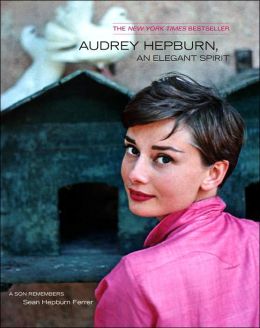
Although the American Film Institute ranks Audrey as the third greatest screen legend in the history of cinema, I guess I didn’t know much about her. But the 2003 book her son wrote “Audrey Hepburn, an Elegant Spirit” is quite a moving remembrance of the actress. It takes readers through her childhood living under the Nazi occupation in the Netherlands, and the absence of her father, to her storied acting career, her hiatus from film to be a mother, and later her total devotion to helping children refugees as a UNICEF ambassador.
You get a sense from the book how remarkable a person she was, which translated onto the screen in the roles she took. She seemed unique, talented and glamorous in her own understated, beautiful style. Yet despite all her success and the respect of those in the film business, Audrey had a sadness within her, her son says, whether it was from her childhood or her miscarriages, or from what she saw happening in the world, it was there. It seems though in her later life she found her calling helping refugees all over the world. Unfortunately she had much more she wanted to do but her life was cut short in 1993 by cancer at the age of 63.
The book “Audrey Hepburn, An Elegant Spirit” is a personal and touching portrait by a son of his mother. It’s filled with captivating photos, too, that lured me into her story. She had an interesting life, and was at the top echelon of her field in film, but it was also a bit sad. The book was similar to the one I had just read before: “The End of Your Life Book Club.” Both were written by sons of their bright, successful mothers, and both mothers worked for refugees in later life, and both lives were cut short by cancer.
“Audrey Hepburn, An Elegant Spirit” made me wish I had known more of the actress and her films when she was alive. I’m glad though to have gotten to know her and her work through this book. She had a special magic about her, and was an inspiration to so many, even to me now reading this so many years later. The world lost a genuine star when she passed away. Next up, I’ll need to pick up a book that doesn’t have such a sad ending. Hmm.
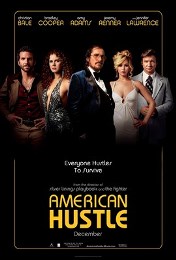
Also this week the Hub and I saw the movie “American Hustle,” which mainly takes place in New Jersey. It’s loosely based on the massive 1978 FBI anti-corruption operation known as Abscam, where a bunch of politicians were ultimately put in jail for accepting bribes.
I didn’t know what to expect going into this, but the film is quite entertaining, particularly because of its stellar cast. Christian Bale and Amy Adams are different and terrific as con artists, and Jennifer Lawrence and Bradley Cooper are amusing in their flitty roles. The film’s a dark comedy but dramatic at the same time, as you watch how the evolving sting operation will unfold.
I liked the ’70s soundtrack of “American Hustle” right away and thought it added a lot to the movie along with the dippy fashion and clothes of the times. But the movie seemed a bit long and I was ready for it to end. Maybe it’s so overly well done, I wanted to get out of it. I liked it okay but I think my Hub liked it better than I did.
What about you – have you seen “American Hustle” and what did you think? Or do you know much about Audrey Hepburn, or have you seen or liked any of her films? Continue reading
Posted in Books, Movies
14 Comments

